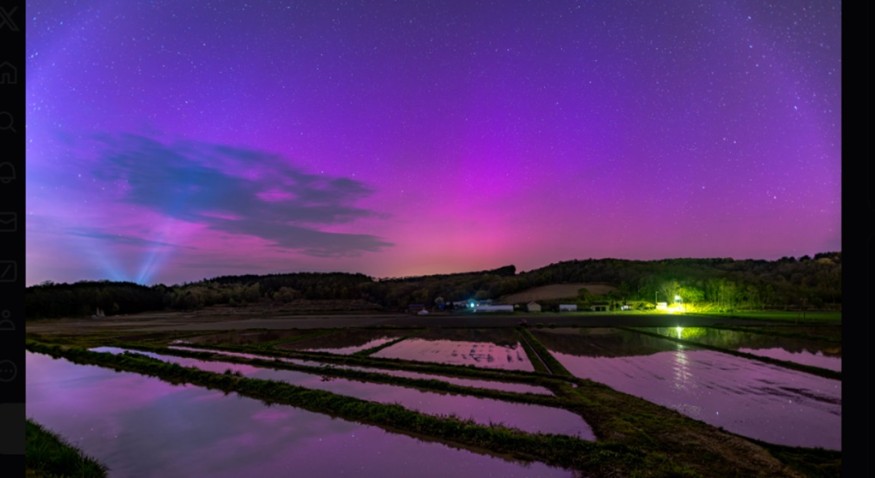
In a spectacular event on May 11, 2024, the skies over Japan lit up with a rare blue aurora, captivating onlookers and challenging scientists' understanding of Earth's upper atmosphere.
Unlike the more common green and red auroras, this striking blue glow was seen at low latitudes, stretching across Japan's Honshu and Hokkaido islands. The phenomenon, triggered by a powerful geomagnetic storm, was both an awe-inspiring sight and a scientific puzzle.
Rare Blue Aurora Reaches New Heights Over Japan
Auroras typically occur when charged particles from the Sun interact with Earth's magnetic field, channeling energy into the atmosphere and producing colorful lights. While red auroras are common at lower latitudes, blue ones are much rarer.
This aurora not only glowed blue but also extended unusually high into the sky, reaching altitudes between 400 and 900 kilometers. For comparison, the International Space Station orbits at about 400 kilometers above Earth.
The event was widely documented by citizen scientists using smartphones and cameras, providing researchers with an abundance of visual data.
According to ScienceAlert, this wealth of information allowed physicists Sota Nanjo from the Swedish Institute of Space Physics and Kazuo Shiokawa from Nagoya University to analyze the aurora in unprecedented detail.
Their findings, published in the journal Earth, Planets and Space, revealed that the blue aurora formed in three distinct structures and aligned with Earth's magnetic field lines, spanning more than 1,200 kilometers.
Unstable Nitrogen Ions and Blue Glow: Auroras Raise New Questions
According to SciTechDaily, This alignment and color pose a challenge to existing theories about auroras. Low-latitude auroras are usually attributed to a process involving energetic neutral atoms (ENAs) energized by Earth's ring current — a torus-shaped region of charged particles.
However, the observed structures and alignment don't fit this explanation. Instead, the researchers propose that nitrogen molecular ions, a type of heavy particle, may have been accelerated upward to create the blue glow.
This idea introduces a new mystery: Nitrogen molecular ions are typically unstable and short-lived, making their presence at such high altitudes difficult to explain. What mechanism propelled these ions upward remains unknown, leaving scientists with more questions than answers.
As solar activity increases in the coming years, researchers hope to observe similar blue auroras to uncover the processes behind them. The findings not only deepen our understanding of auroras but also highlight the importance of combining professional research with citizen science.
The event is a reminder of Earth's dynamic and still mysterious atmospheric forces, offering valuable insights into both natural phenomena and the tools used to study them.
© 2025 NatureWorldNews.com All rights reserved. Do not reproduce without permission.





